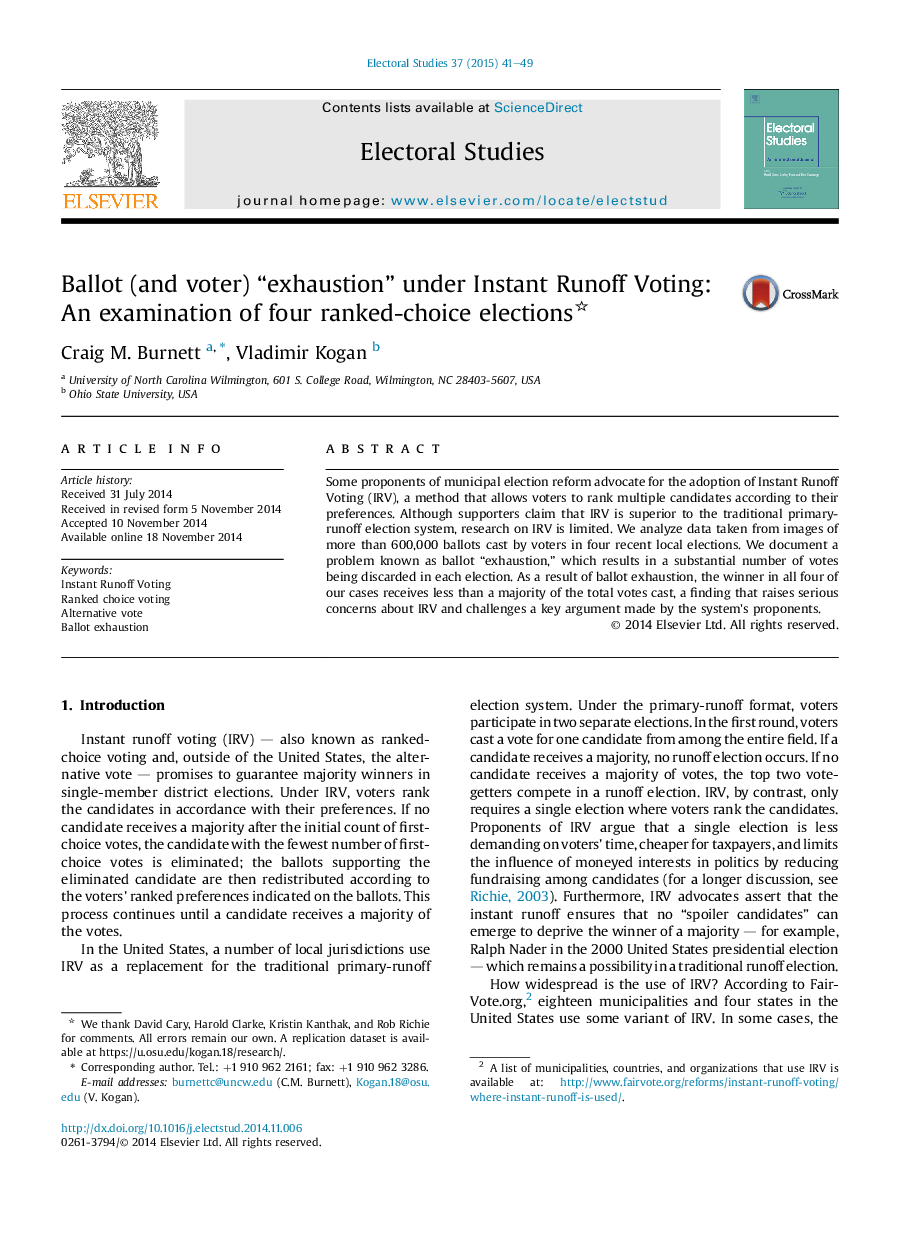| Article ID | Journal | Published Year | Pages | File Type |
|---|---|---|---|---|
| 1051816 | Electoral Studies | 2015 | 9 Pages |
•Instant runoff voting does not guarantee winners who receive an absolute majority.•The rate of ballot exhaustion was high in each election, ranging 9.6%–27.1%.•Voters' inability to rank multiple candidates contributes to ballot exhaustion.
Some proponents of municipal election reform advocate for the adoption of Instant Runoff Voting (IRV), a method that allows voters to rank multiple candidates according to their preferences. Although supporters claim that IRV is superior to the traditional primary-runoff election system, research on IRV is limited. We analyze data taken from images of more than 600,000 ballots cast by voters in four recent local elections. We document a problem known as ballot “exhaustion,” which results in a substantial number of votes being discarded in each election. As a result of ballot exhaustion, the winner in all four of our cases receives less than a majority of the total votes cast, a finding that raises serious concerns about IRV and challenges a key argument made by the system's proponents.
